Start Licensing’s Ian Downes heads to Birmingham for Spring Fair and leaves encouraged that licensing still has a role to play in the vibrant world of gifting.
I am just back from three days at Spring Fair in Birmingham – the latest in a series of trade shows I have attended in recent weeks. Have lanyard, will travel. I think I have a fortnight’s respite until the next one.
For my business, Spring Fair is a significant show not least because of the in-market presence our clients have. Across our portfolio we had around 20 licensees on parade. Gifting is a core part of the Aardman licensing programme and there were around a dozen Aardman licensees at the show. This is a good example of how a licensing programme can be built on and out of the gift sector. So for me it was a busy show and anecdotally it seemed most exhibitors I spoke to felt the show was busy for them. Indeed on more than one occasion I had to put a catch up chat on hold as the licensee I was chatting to had to serve a customer and take an order. Monday in particular seemed busy – I had to quickly learn how to successful bodyswerve people in the aisles on a couple of occasions.
Clearly trade shows are different in scale and shape from five or 10 years ago and maybe unrecognisable from 20 years ago, but my feeling is that they still have a key role to play within a business sector. Importantly exhibitors need to approach trade shows differently and arguably take more of a front foot approach to their participation, being proactive in their in-show marketing and using the show as a platform to build engagement from.
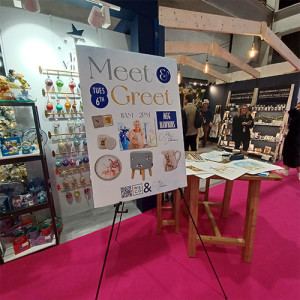 A great example of this proactive style to show engagement was provided by Widdop & Co – it promoted its presence at the show via trade advertising, hosted events at the show, used giveaways to catch visitors’ attention and made good use of digital media during the show with regular posts from their stand. In old fashioned terms, it created a buzz around the business.
A great example of this proactive style to show engagement was provided by Widdop & Co – it promoted its presence at the show via trade advertising, hosted events at the show, used giveaways to catch visitors’ attention and made good use of digital media during the show with regular posts from their stand. In old fashioned terms, it created a buzz around the business.
Due to my busy show schedule, I am limiting my Look Out to five key takeouts from the Spring Fair this week. As always I would caveat my observations with the rider that they aren’t a reflection of the show as a whole, but reflect my journey round the aisles which was punctuated this year by frequent stops at the booths of licensees I am working with.
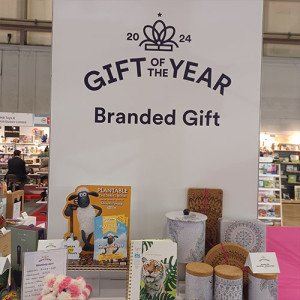 My first observation was to recognise the ongoing work of The Giftware Association generally and, specifically, the success of the Gift of the Year programme. This is now an integral part of Spring Fair and helps create a focal point within the industry.
My first observation was to recognise the ongoing work of The Giftware Association generally and, specifically, the success of the Gift of the Year programme. This is now an integral part of Spring Fair and helps create a focal point within the industry.
This year the Gift of the Year finalists were all displayed in a well curated space at the front of one of the halls and attracted a lot of attention. Licensed products featured across a number of categories, while also being recognised specifically in the Branded Gift category. On a personal note it was satisfying to see two of our licensees featured in this category, with Willsow receiving a nomination for its Shaun the Sheep plantable book and Little Beau Sheep for its eco friendly Shaun the Sheep felted soaps and laundry products. Both licensees have used their nominations to help further promote their companies, showing how awards programmes like this can create great momentum for companies. I think the Gift of the Year programme is a really good example of a trade association shining a positive light on its industry and creating a useful forum for its members.
Overall, I felt there was less licensing on show at Spring Fair and that there was no one outstanding licensed brand that was leading the way at the moment. This may be a reflection of the changing shape of the licensing market itself, but there was some suggestions from exhibitors that I talked to about it that they felt licensed products can be more expensive than non licensed lines and, as such, current demands around margin from retailers mean it is more difficult to sell in licensed products. That said the reverse of this is that well established licensed brands bring an in-built value with them and, of course, a ready made audience.
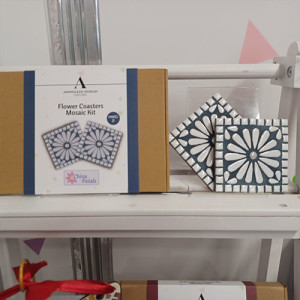 Against the backdrop of this observation, it was interesting to note that licensing categories such as gaming and heritage seem to have firmer footholds. Licensees like Pyramid had dedicated space on their stand devoted to gaming properties, making it easier for buyers to select products from this genre, while I spotted heritage brands on a broad range of stands and product categories.
Against the backdrop of this observation, it was interesting to note that licensing categories such as gaming and heritage seem to have firmer footholds. Licensees like Pyramid had dedicated space on their stand devoted to gaming properties, making it easier for buyers to select products from this genre, while I spotted heritage brands on a broad range of stands and product categories.
A good example being China Petals’ Ashmolean mosaic kits. It was also interesting to see collegiate brands such as Oxford, Cambridge and Edinburgh universities having a presence in the show especially in the apparel category.
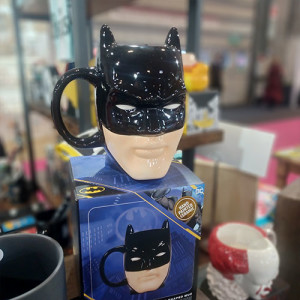 While I felt there was less licensing in show overall and there were the concerns around margin that I mentioned, it was encouraging to see that licensees like Half Moon Bay aren’t economising when it comes to product development and design. Its product ranges provide numerous examples of an ongoing commitment to bespoke product development and design. The 3D figural mugs are a great example of investing in products that will resonate with fans and retailers. I noticed a really striking Batman mug this time round, while it was great to see the new range it has developed for The Beatles. It is good to see that licensees like Half Moon Bay and others appreciate that their consumers are emotionally invested in the brands they follow responding well to products that allow them to indulge their fandom at a deeper level.
While I felt there was less licensing in show overall and there were the concerns around margin that I mentioned, it was encouraging to see that licensees like Half Moon Bay aren’t economising when it comes to product development and design. Its product ranges provide numerous examples of an ongoing commitment to bespoke product development and design. The 3D figural mugs are a great example of investing in products that will resonate with fans and retailers. I noticed a really striking Batman mug this time round, while it was great to see the new range it has developed for The Beatles. It is good to see that licensees like Half Moon Bay and others appreciate that their consumers are emotionally invested in the brands they follow responding well to products that allow them to indulge their fandom at a deeper level.
This is also reflected in the level of detail companies like Paper Engine put into their licensed products. I work with the company on Wallace & Gromit and a feature of its product development has been going the extra yard to deliver an authentic product experience. A good example of this is that in one of the cardboard construction kits there is a dog bowl with Gromit’s name on, plus a carefully crafted dog bone. It would be easy to miss this detail, but for fans it is details like these that make the difference. Hopefully licensees will continue to take this approach to product development recognising that money invested in product development is money well spent.
My final observation from Birmingham was how encouraged I was by the success and development of ‘new to’ licensing companies. Generally I think it is a good thing for the licensing industry to welcome new companies on the licensee side and in recent times there have been a number of new entrants often in new categories or indeed categories that companies have created themselves. Willsow’s Plantable Shaun the Sheep book is a good example of this. Plantable books certainly didn’t feature on my gap list a few years ago!
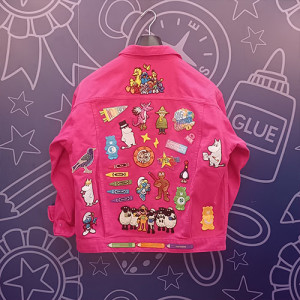 Licensing needs new blood to thrive and survive. A great example of a company that seems to be developing really well and maximising the opportunity that licensing has given them is Pawprint Family which develops pin badges and patches. Its stand at Spring Fair was imaginatively presented and stood out in the show. It has licences such as Aardman, The Gruffalo and Care Bears in its portfolio. It has worked proactively with licensing partners and built up a great network which has delivered incremental sales. The products are well designed and work well as collections. I liked the way it displayed them on the stand particularly showing the patches on garments including a denim jacket that I think quite a few visitors were keen to acquire. Companies like Pawprint Family are great examples of how licensing can help a company develop an identity in a crowded space while bringing fresh thinking to the industry.
Licensing needs new blood to thrive and survive. A great example of a company that seems to be developing really well and maximising the opportunity that licensing has given them is Pawprint Family which develops pin badges and patches. Its stand at Spring Fair was imaginatively presented and stood out in the show. It has licences such as Aardman, The Gruffalo and Care Bears in its portfolio. It has worked proactively with licensing partners and built up a great network which has delivered incremental sales. The products are well designed and work well as collections. I liked the way it displayed them on the stand particularly showing the patches on garments including a denim jacket that I think quite a few visitors were keen to acquire. Companies like Pawprint Family are great examples of how licensing can help a company develop an identity in a crowded space while bringing fresh thinking to the industry.
I left the NEC a little bit leg weary, but encouraged that licensing still has a role to play in the vibrant world of gifting, but it is a role that is changing and evolving. A pragmatic approach is needed coupled with a commitment to ‘on brand’ product development. It certainly isn’t the time to stand still, particularly in the aisles of Hall 3 on a Monday morning!
Ian Downes runs Start Licensing, an independent brand licensing agency. His Twitter handle is @startlicensing – he would welcome your suggestions for what to look out for.































